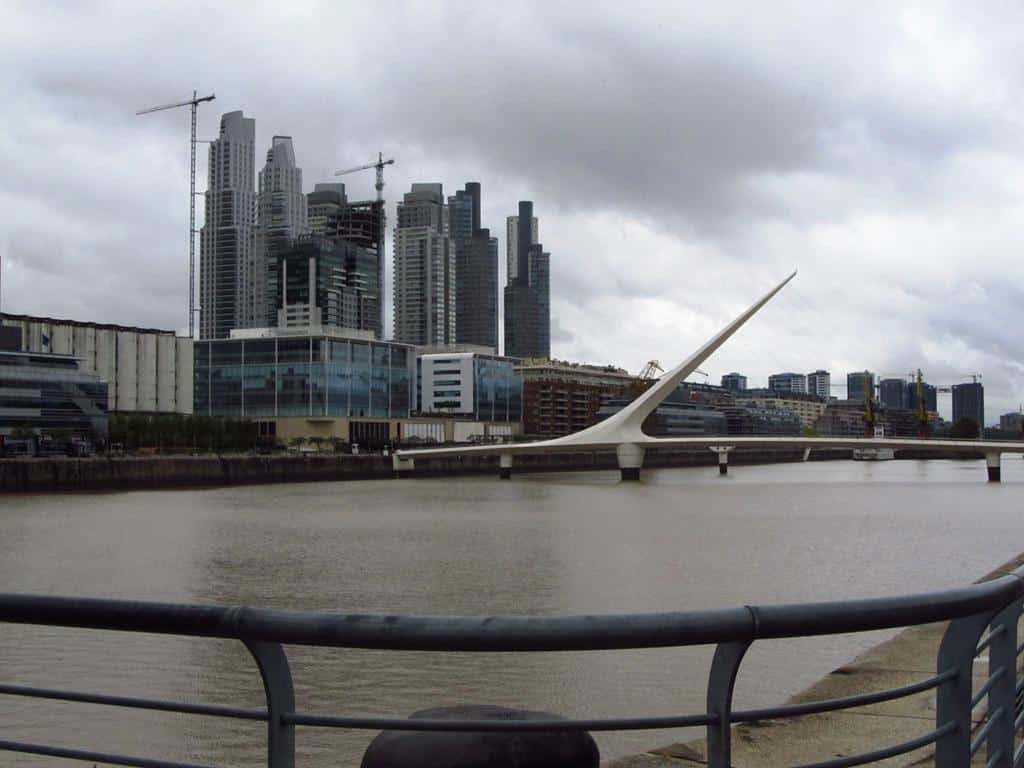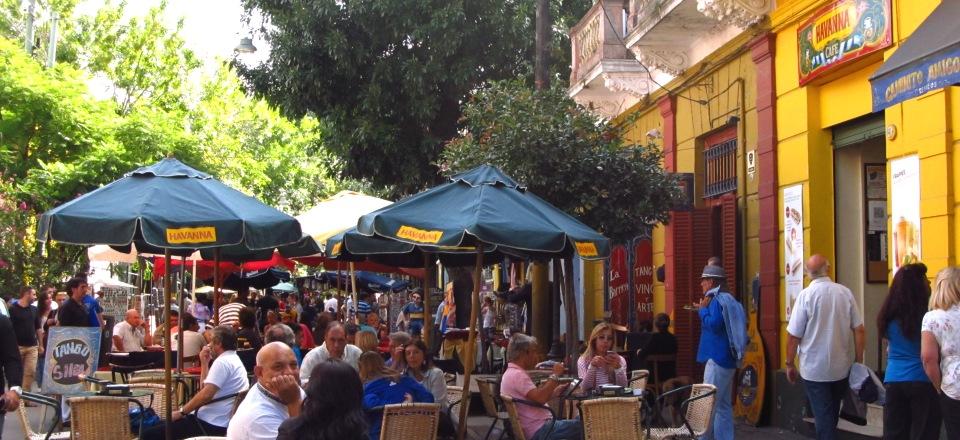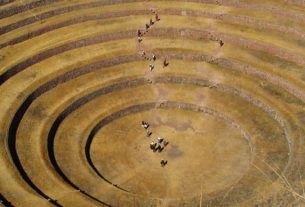Everyone has dreamed of traveling to Argentina. Next door, our neighbor is full of cultural, gastronomic and historical attractions, has a favorable exchange rate compared to ours and is an excellent first trip abroad (or second, or third…) due to its cultural proximity, receptivity and ease of traveling without a visa or even a passport.
In this post, we have separated the main tips for those planning to travel to Argentina. We hope you enjoy!
9 essential tips for traveling to Argentina
1. How to get to Argentina?
Argentina is probably the easiest international destination for Brazilians to reach. Several airlines operate the Brazil – Buenos Aires route, departing from airports across the country. In addition, there are also direct flights from Brazil to Córdoba. Other destinations require stopovers.
The airlines that operate the main routes are: Latam, Gol, Aerolíneas Argentinas, Taca/Avianca and Turkish Airlines. Qatar had a route there from São Paulo, which was an extension of the flight to Doha, but due to the pandemic the company stopped operating this route. It is also possible to find Emirates, British and Lufthansa flights, but in general they are much rarer and more expensive.
Anyone who wants can also go by land, by bus or car.: Pluma and Crucero del Norte travel from São Paulo. It takes about 30 hours to travel and costs between 200 and 300 reais.
2. Visa and immigration to travel to Argentina
Brazilians who travel to Argentina for tourism do not need a visa to enter the country.
For those staying up to 90 days, a valid passport or identity card in good condition and with a recent photo is enough to enter Argentina. If you choose your ID, when you enter the country you will receive a piece of paper that you have to return when leaving, it is equivalent to a passport stamp.
Read also: Traveling without a passport: rules for traveling in South America
Remember to charge the officer if he forgets to give you the paper (we’ve seen this happen). And keep it in a very safe place. If you lose it, you will have to pay a fine when you leave, as if you had overstayed your stay.
Study and work visa in Argentina
If you intend to stay in Argentina for more than 90 days, whatever the reason, you can also travel without a visa and complete the residency procedures upon arriving in the country. Because of the agreement between Mercosur countries, we have the right to request this legal residence, which is why the process is easier.
Thus, we are able to obtain the Argentine identity document and, thus, have the right to work and study legally in the country.
To start your residence process and get your DNI, you need to go to the Dirección Nacional de Migraciones, in Buenos Aires, and schedule your shift. Don’t worry, you can enter the country as a tourist and start the process from there. If you prefer, you can also apply in Brazil at an Argentine consulate.
We explain this process in more detail in the posts below:
• How long can I legally stay in Argentina
• Living in Argentina: everything you need to know
3. How to take out travel insurance for Argentina
Taking out travel insurance has been mandatory since the country reopened due to the pandemic. And it’s not enough to have just any insurance: you need to take out one that has coverage against Covid-19 expressed in the policy.
To ensure that you find travel insurance with the best cost/benefit and within the rules, we recommend using a search engine like Seguros Promo, which compares the main insurance companies and ensures that you find the best value for money, according to your needs.
Additionally, blog readers are entitled to an exclusive discount coupon of up to 25%. See some of the offers below and choose yours:
4. Telephony and internet in Argentina
The telephone code in Argentina is +54. Internet and telephone can be found everywhere, in so-called newsrooms. Looking like a convenience store, these places have booths that make cheap international calls. Some lounges also function as LAN houses.
Furthermore, if you are in Buenos Aires, it is very easy to find restaurants, bars and cafes with free Wi-Fi.
To buy a local internet chip, you need to go to the telephone operator stores: Claro, Movistar or Personal. Previously, it was possible to buy it in kiosks, the small grocery stores that are everywhere, but since 2017 the government has started to require registration for prepaid lines. Therefore, you will have to make the purchase directly at the operator and present your travel document to activate the line.
Choose stores in the center, as you will not be able to register at the airport. There is a Claro store and a Movistar store in Florida and Lavalle, and a Personal store on the corner with Corrientes. I personally choose Movistar when I’m in the country, recommended by Argentine friends.
5. What currency to take for your trip to Argentina
Do not buy pesos before arriving in the country. You can take dollars or reais, it’s up to you. When we put it on the tip of our pencils, the conversion between the dollar and the peso on the parallel exchange rate is slightly more advantageous than the real and the peso, but as you will have to do the conversion between the real and the dollar beforehand – and we always lose a little money in this process – the difference turns out to be not that obvious.
Therefore, I believe that The best currency to take to Argentina is the realfor practicality.
But this only applies if your trip is exclusively to Buenos Aires and Bariloche, places where there are many Brazilian tourists.
If you go to other parts of the country and need to exchange money in those places, The best thing to do is to travel with dollars.
Read too: What currency to take to Argentina
Most tourist establishments, such as hotels and restaurants, accept payment in dollars and even in reais, but the rate they charge will be disadvantageous, so only opt for this as a last resort or if your trip through the country is very quick.
Not all places accept credit cards in Buenos Aires. It may happen that restaurants or stores refuse cards, so I strongly recommend that you plan to pay your bills in cash.
6. How the Parallel Exchange works in Argentina
The Argentine economy is a rollercoaster of emotions and so is the country’s inflation and the peso exchange rate. Traveling there was once very cheap for us, then it got expensive, then it got cheaper again. As I type this text in August 2020, the conversion rate is around 0.075 cents. This means one real is worth around 13.18 Argentine pesos. One dollar is worth 73.73 pesos.
This is the official quote, the one you will find if you are exchanging money here in Brazil or at an Argentine bank. But as the Argentine government has controlled the exchange rate and the purchase of dollars in the country for several years, a parallel market for the currency was created, which is sold at a much more advantageous value than that practiced at official points.
Read more: Everything about Parallel Exchange in Argentina
And this doesn’t just happen with the dollar. Due to the large flow of Brazilians in the country, the real is also traded in these parallel houses in Buenos Aires at a much more advantageous price for us. A trip to Argentina paid in money exchanged at the parallel exchange rate can be around 30% cheaper than if it were paid at the official exchange rate. For this reason, the best thing to do is to exchange the money only when you arrive in the country.
If you feel insecure, you can change just enough for the first few days before traveling or when you arrive at the airport.
Once in the city, head to Calle Florida. You don’t need to go down any alley, parallel exchange is done so openly that money changers spend the whole day shouting in search of customers, in front of police officers and even just a few meters from Casa Rosada, the seat of the country’s executive power. .
Give preference to places that operate with a physical store, instead of changing in the middle of the street. The reason is simple: you know that store will be there tomorrow. Exchange a little money and, if you don’t have any problems, exchange more the next day.
Also require that the pen that identifies counterfeit bills be passed on both sides of each ticket. If possible, ask your hotel or other travelers for advice on where to change.
If you don’t want to buy pesos at parallel exchange offices, it’s still better to take the dollars or reais to Argentina and exchange them there. To this end, Banco de La Nación branches, Even those at airports tend to have a good exchange rate for both currencies.
7. How much does it cost to travel to Argentina
A basic traveler, who doesn’t splurge or spend too much, should spend, on average, around R$150 per day and per person in Argentina, including accommodation in a hotel or simple guesthouse and excluding air tickets. This value was calculated for the peso exchange rate in 2019, remembering that the country’s busy economy always changes this calculation.
8. Scams and security in Argentina
Many people have heard about the famous taxi driver scams and fake notes. This is a very common scam: the taxi driver returns your change in fake notes, or tells you about the scam and asks to see your money and, without you noticing, exchanges your money for fake notes.
When taking taxis, check if they have government-certified identification. Still, always have money in change to avoid confusion with change that could lead to you being scammed. And above all, don’t show your money to anyone and be very careful with exchange offices and even ATMs. Any problem, call the police and make a fuss.
This website listed 5 common scams in Buenos Aires. Read before leaving home.
That said, the country is safe. Buenos Aires is probably the safest capital in South America. In the regions where you will travel, violent crimes, such as armed robberies, are very rare. However, thefts are rampant. It’s good to be careful with pickpockets. In crowded areas, like the subway, they can take cell phones out of bags without anyone noticing.
I myself have had three phones stolen like this when I lived there. So you need to pay attention at all times not only to your belongings, but also to the people who are close to you.
9. How to travel within Argentina
The roads in Argentina are beautiful and safe, which makes a road trip or long bus journeys very viable travel options, especially if you intend to venture into the Andean northwest or Patagonia.
The situation of the main roads is, in general, very good. Secondary services can be more precarious, depending on the region of the country.
The most famous road is Ruta 40, a secondary highway that runs parallel to the Andes, from north to south of Argentina. Enjoying this view from the window is a privilege. If you choose to rent a car for the journey, we will indicate the RentCarswhich searches among the main rental companies and helps you find the best prices and rental conditions.

Bear in mind, however, that the distances are enormous!
To get from Buenos Aires to Córdoba, for example, it takes about 9 hours by road. For this reason, taking longer flights by plane helps save time. There are several companies that operate domestic flights in the country, including Latam, Aerolíneas Argentina and low cost JetCost.
However low cost it may be, however, flying is not a mega economical commute in the country. Therefore, it is good to keep an eye on prices well in advance.
There are also train lines with tourist routes in the country. The most famous is the Tren de la Costa, which connects Buenos Aires and Tigre in a scenic ride. This is also a good option for those who want to visit Mar del Plata and an alternative way to get to Córdoba.
When you buy your ticket online on the national train company’s website, you get a 10% discount.
Also check out the full video with all the travel tips for Argentina:
Sign up for our newsletter

Sign up for our newsletter and stay up to date with exclusive news
that can transform your routine!
Warning: Undefined array key "title" in /home/storelat/public_html/wp-content/plugins/link-whisper-premium/templates/frontend/related-posts.php on line 12
Warning: Undefined array key "title_tag" in /home/storelat/public_html/wp-content/plugins/link-whisper-premium/templates/frontend/related-posts.php on line 13




